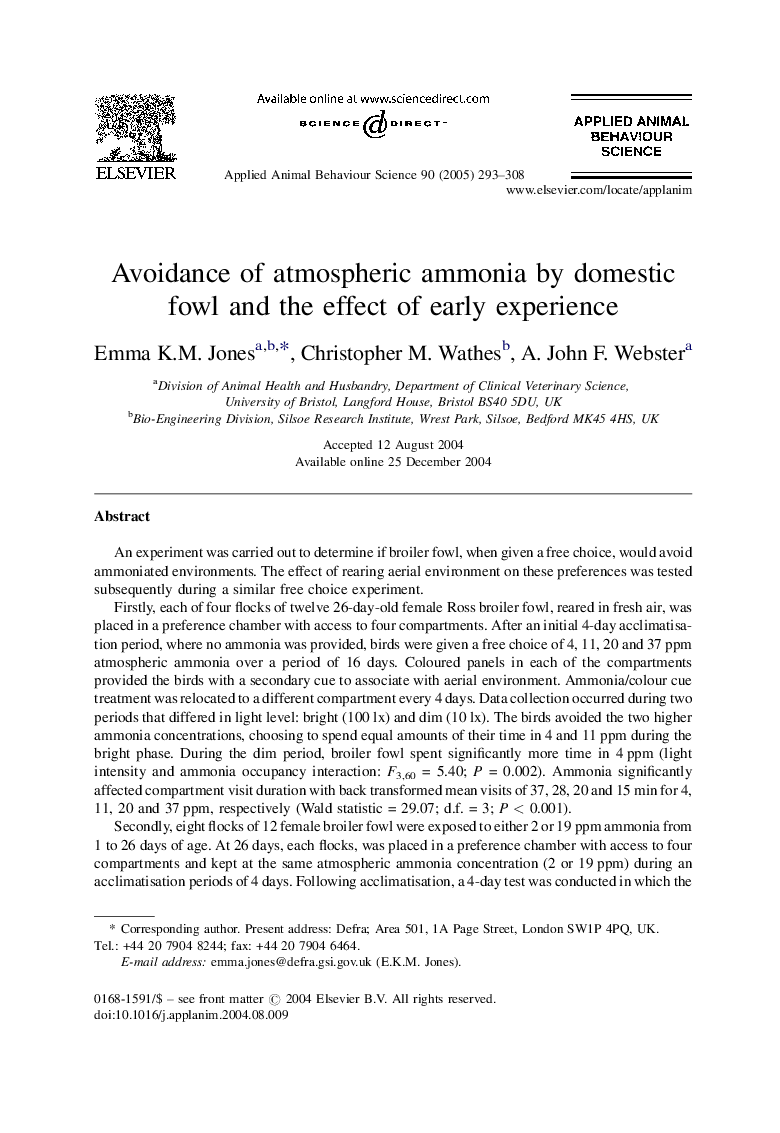| Article ID | Journal | Published Year | Pages | File Type |
|---|---|---|---|---|
| 9475913 | Applied Animal Behaviour Science | 2005 | 16 Pages |
Abstract
Secondly, eight flocks of 12 female broiler fowl were exposed to either 2 or 19Â ppm ammonia from 1 to 26 days of age. At 26 days, each flocks, was placed in a preference chamber with access to four compartments and kept at the same atmospheric ammonia concentration (2 or 19Â ppm) during an acclimatisation periods of 4 days. Following acclimatisation, a 4-day test was conducted in which the birds were given a choice of compartments containing 4, 12, 20 and 37Â ppm ammonia with colour cues. Birds again avoided the two higher ammonia concentrations (F3,15 = 8.54; P = 0.002) and there was no significant interaction between ammonia and previous exposure. Again there was an effect of ammonia on compartment visit duration (Wald statistic = 15.94; d.f. = 3; P = 0.001) but there was no significant interaction between ammonia and previous exposure. Broiler fowl avoid ammonia at concentrations commonly found on poultry units regardless of previous experience, suggesting it to be aversive at concentrations above approximately 10Â ppm.
Related Topics
Life Sciences
Agricultural and Biological Sciences
Animal Science and Zoology
Authors
Emma K.M. Jones, Christopher M. Wathes, A. John F. Webster,
